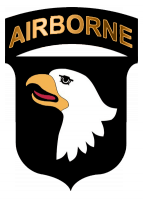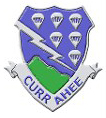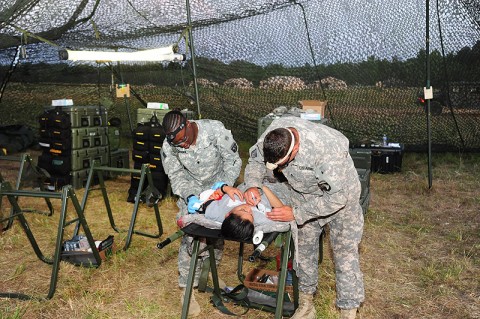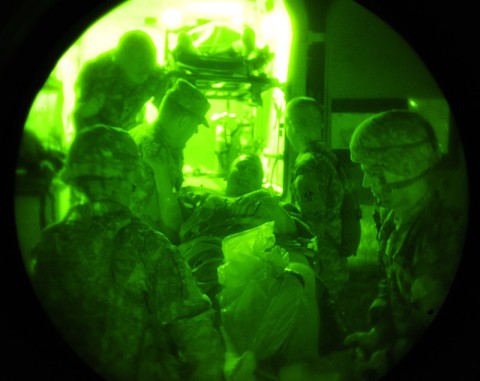Written by Sgt. Kimberly Menzies
4th Brigade Combat Team, 101st Airborne Division


Fort Campbell, KY – Soldiers from Company C, 801st Brigade Support Battalion, 4th Brigade Combat Team, 101st Airborne Division, conducted a situational mass casualty training exercise, June 20th, at Fort Campbell, KY.
The exercise included setting up tents and arranging their contents as field clinics and a three stage situational exercise.

“This gets us re-familiarized with field craft,” said 1st Lt. Andrew Lopez, the treatment platoon leader from Company C, 801st Bde. Spt. Bn. “People are used to going to hard standing buildings and falling in on equipment, this is giving us and opportunity to utilize these latent skills that we should have and be prepared to use.”
 After setting up the facility, the soldiers were required to care for simulated patients at the location where the casualties were injured, after which patients were evacuated to the field hospital for stabilization and care, and based on the severity of their wounds would be held at the hospital or evacuated to another medical care facility.
After setting up the facility, the soldiers were required to care for simulated patients at the location where the casualties were injured, after which patients were evacuated to the field hospital for stabilization and care, and based on the severity of their wounds would be held at the hospital or evacuated to another medical care facility.
“The patients would be stabilized and prepared for transport, where based on their injuries they would be evac’ed to a higher level of care,” Weaver.
The mass casualty training exercise was geared at training new soldiers how to medically treat patients in a field environment.
 “We have over 50 percent new soldiers out of [Advanced Individual Training] in our platoons right now,” said Staff Sgt. John R. Offineer, the senior treatment non-commissioned officer from Company C, 80st Bde. Spt. Bn.
“We have over 50 percent new soldiers out of [Advanced Individual Training] in our platoons right now,” said Staff Sgt. John R. Offineer, the senior treatment non-commissioned officer from Company C, 80st Bde. Spt. Bn.
“This is an opportunity to get soldiers to really treat patients and get hands-on training and experience,” said Sgt. Victoria Waltho-Diaz, the treatment platoon non-commissioned officer-in-charge also from Company C.
Though soldiers receive training within their military occupational specialty, this training exercise better prepares the soldiers to provided patients with well-rounded care.“In AIT the soldiers are taught more individual skills,” said Walthro-Diaz. “Here they get a chance to work on a trauma team, learn sick call procedures, labs and X-rays. It is about long-term care versus initial care.”
Though this is training was with simulated casualties, the underlying importance of the training is ever present.
 “We are making sure that our soldiers and equipment are more efficient in the readying mission to complete our next rendezvous with destiny,” said Offineer. “This is to take what we have learned on the battlefield as NCOs and officers, and to train [soldiers] for what they are going to see or possible see.”
“We are making sure that our soldiers and equipment are more efficient in the readying mission to complete our next rendezvous with destiny,” said Offineer. “This is to take what we have learned on the battlefield as NCOs and officers, and to train [soldiers] for what they are going to see or possible see.”
Company C was completing a portion of Eagle Flight II training. This particular training exercise was to certify the company in many of their perspective of platoon level collective medical tasks.


